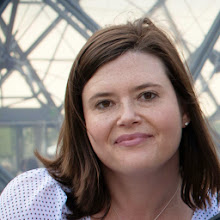Getting Fresh
Earlier this month, I found this funny someecard and it just made me giggle and giggle.
I posted it to Pinterest and counted myself lucky to have found such a perfect sentiment.
Fast-forward to the following Tuesday 8am and I am feeling just a wee PO'd. My Monday afternoon baseline "Yeah, you are 40!" mammogram didn't go quite as planned. First, I wasn't able to get out of the office anonymously. As my dear husband, Eric, is one of the radiologists that practices in the Women's imaging center, I knew it was possible I'd be recognized if for no other reason than my next of kin and insurance card sport his name. I kept my maiden name so often I fly under the radar as his wife (and more importantly at times, he as my husband). So when I was outted (by the man himself who was being consulted on a case with the radiologist doing mammo), I assumed that I was being given special treatment as a 'wife'. The extra pictures and personal consult didn't really click until "Looks great EXCEPT..."
The mammogram itself wasn't tough. I scheduled mine during a time when I generally had no extra sensitivity issues. And generally, I have a good tolerance for discomfort though I adore complaining about it. I was shown to a locker where I put my shirt, bra and valuables but left my necklace on. I donned their cape, not a cool "Super Boob Woman" kinda cape but a soft if ugly blue and pink thing with a button at the neck. I waited a few minutes in the secondary waiting room, which had a few other women in ugly capes, before a tech took me into one of the rooms and placed two strips of tape like material over my nipples. These had some metal stud on them and I recall thinking that this was about as rock and roll as I was ever getting with my boobs.
And then we danced! The tech had a machine to place in a very specific place. She was a pro but imagine having to swing a terribly expensive and heavy machine around 15 or so different pairs of breasts, all attached to 15 different bodies with varying heights and weights, in a single day. She had me lean aft, then fore, tilt here, reach there. There was a moment when my lack of youth hit me as I had to hold my right breast to prevent it from slumping into the frame with the left one like a pornographic photo bomb. All the while, the tech had ahold of my breast, gently but firmly making sure it hit the plates at the appropriate spot. Then the plexiglass was lowered, my visions of my youth marred again as my breast was easily pan caked, and the X-ray taken. This we did many times. 8 or so on each side. And then I sat and waited to be released back into the wild. Instead, I was recalled, the winner of a second set of pics, ones I assumed I was getting because I had moved or breathed during an ill timed moment.
I am, like most, a total novice at X-rays. On occasion, a friend will bring one by and we will stand around Eric's light board ruminating until Eric flips the X-ray right side up and makes his scholarly declaration. My buddy Nicole is something of a savant considering her lack of medical skills. If Eric brings home a teaching case, she is always amazingly accurate at pointing out what one spot "isn't like the other". But even without her savvy, looking at the enhanced magnification mammo pics I could see the pretty white spots in my otherwise beloved boob and I suddenly realized that while the staff might adore Eric, I was getting special attention because of me.
So I am barely 40, just there for a baseline and now facing what? Micro-calcifications, it turns out. Since I got to grill a doctor, let me give you a little TMI on these puppies. They aren't anything other than what their name says.... tiny bits of calcium. They can get all layered in a woman's milk ducts or near them (aka in your boob) and create white specks on a mammo. If there are lots of them, it could mean a girl is particularly good at making them. But if they only appear in one spot (as did my collection), they might mean something else. They might be DCIS, a stage zero cancer. A pre-cancer. An indication that the cells there might be interested in swapping their colors for something meaner in the future. And there is only one way to find out for sure - grab some of those cells and give them the equivalent of a pat down from a Pathologist.
Let me stress, as the wife of a radiologist, that the average person (or even doctor) cannot read an X-ray. My dear husband and his colleagues trained for a minimum of 5 years after their 4 years of medical school. Some, like Eric, trained for a 6th year. And a neuro-interventional radiologist trains for 7. Your most basic radiologist has spent more years in mandatory training than a surgeon (4 years) or an ob-gyn (4 years). They read X-rays, CT scans, MRIs, fMRIs, PET scans, DEXA scans, all of which are very different beasts with terribly different talents as an exam. They learn to read most of these tests with contrast or a nuclear tracer as well. Additionally, radiologists are the doctors who typically biopsy the craziness they find somewhere in the layers of our bodies. Some will also put in ports or access tubes for chemo or drainage or dialysis or food. They coil aneurysms, deploy balloons and stents and embolize or clot bleeding. Give these folks a picture and watch them get dirty and get it done. They are, though I may be biased, THE most important doctor you rarely ever see.
So when my radiologist said, "microcalcifications" I tried desperately hard to shut up and listen. She recommended a biopsy of these tiny specks, something I was surprised to hear. I assumed they were too small to yield up results. But Dr. H., a multidecade veteran of the breast v cancer wars, has done this before, maybe a bit more than a few times. She was clear that, no, they are definitely not too small (I cringe at the thought she might have taken my comment as an implication that her skill was lacking). And in her opinion, they should be biopsyed. I signed up.
There was the option to wait and see and sometimes you will hear that from your doctor. I heard it from my husband later that day. He looked at the scan and said he wanted it biopsied but his co-worker, who was in the reading room with him, said he would have gone the follow up route. As an attorney and wife of a rad, I will interpret the "wait and see" for you. I always ask Eric, "Did you see anything interesting today?" In a wait and see case, Eric is likely to answer my question with something like "Yeah! I saw this thing in this person. It really looks benign. But there was this one characteristic that I have never before seen. So I recommended a 90 day follow up". What he is trying to say, "Every human is in fact unique. I have seen this be benign 50 times and never not be benign. But in this guy, this small variation of size or location or density or ???, I would hate for that variation to be the indicator of a problem and to have it get missed." For micro-calcifications, the wait and see approach is usually taken when the shape, number, and layering properties lead the doctor to be fairly certain it is benign. In my case, the shape was too amorphous and the layering was not evident and the calcs were not big (which often means benign). Further, I had them in only one localized spot, at a fairly shallow depth. They were more suspicious than not. They deserved a biopsy.
Before I left Monday, a technician took me into the biopsy room and showed me the layout. She explained the procedure and gave me some standard requests... no aspirin or Advil therapy until well after the biopsy was done. And so Tuesday morning, bright and early, I headed to the hospital. It was time to get fresh with a growing number of my husband's co-workers.
To Be Continued.....








